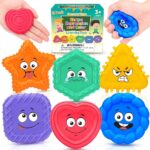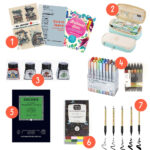I. Understanding Upcycled Wool: Benefits and Materials
II. Step-by-Step Guide to Making Upcycled Wool Diaper Covers
III. Caring for Your Upcycled Wool Diaper Covers
Understanding Upcycled Wool: Benefits and Materials
Have you ever thought about how amazing wool can be, especially when it’s upcycled? If you’re a parent or someone interested in sustainable living, you might want to consider making the switch to upcycled wool for your little one’s diaper covers. Let’s dive into what upcycled wool truly is, the benefits it offers, and the materials you’ll need.
What is Upcycled Wool?
Upcycled wool refers to wool fabric that has been repurposed from old garments or other textile products. Instead of sending these items to the landfill, they are transformed and given a new life. This process not only helps reduce waste but also brings unique, often high-quality materials into the mix for your DIY projects.
The Benefits of Using Upcycled Wool
Choosing upcycled wool for diaper covers comes with a treasure trove of benefits. Here are some of the highlights:
- Eco-Friendly: Upcycling supports a circular economy by extending the life of materials. Every time you choose upcycled wool, you’re reducing waste and conserving resources.
- Natural Insulation: Wool is a fantastic insulator, keeping your baby warm without overheating. It naturally regulates temperature, making it a great choice for any season.
- Moisture-Wicking: Wool excels at wicking moisture away from the skin. This means your baby stays dry and comfortable, reducing the risk of diaper rash.
- Breathability: Unlike synthetic materials, wool allows for airflow, which helps to keep your baby’s skin healthy and happy.
- Durability: Wool is known for its strength and longevity. When cared for properly, upcycled wool items can last through multiple children, making it a smart investment.
Materials You Can Use
When it comes to upcycled wool, there’s a delightful variety of fabrics to choose from. Here are some common materials you might consider:
- Old Wool Sweaters: Check your closet or thrift stores; a felted wool sweater can be perfect for upcycling!
- Wool Blankets: Wool blankets can be cut down to size, providing ample fabric for several diaper covers.
- Wool Coats: An old wool coat might seem like a stretch, but with some creativity, it can yield great pieces for your baby.
- Wool Yarn: If you’re into knitting or crocheting, you can use leftover wool yarn to make custom diaper covers.
In summary, upcycled wool is a fantastic option for parents seeking sustainable, effective, and comfortable diaper covers for their little ones. With its numerous benefits and the variety of materials available, you’ll not only feel good about your choices but also have fun exploring the creative possibilities! So, next time you see an old wool item, think twice before tossing it out; it might just become the perfect diaper cover for your baby!
Step-by-Step Guide to Making Upcycled Wool Diaper Covers
Welcome to the fun and creative world of making your own upcycled wool diaper covers! If you’re looking for a sustainable, eco-friendly option for your little one, you’re in the right place. Not only will you be giving new life to wool, but you’ll also be crafting something soft, comfortable, and incredibly effective. Ready to dive in? Let’s get started!
Materials You’ll Need
Before we begin, let’s gather our supplies:
- Upcycled Wool Sweater: Look for an old wool sweater at thrift stores or even raid your closet! Make sure it’s 100% wool for the best results.
- Scissors: Sharp scissors will make cutting the fabric easier.
- Measuring Tape: A soft measuring tape is best for measuring your little one.
- Sewing Machine or Needle and Thread: If you’re a sewing pro, use a machine! If not, hand-sewing works just fine.
- Safety Pins or Fabric Clips: These will help hold your pieces together while you sew.
- Optional: Wool Wash or Lanolin: For conditioning your wool once it’s done!
Step 1: Measure and Cut
First, you’ll want to take a few key measurements of your baby’s diaper size. Measure around the waist and the rise (the distance from the front of the waist to the back). Use these measurements to cut your wool sweater accordingly:
- Lay the sweater flat and cut it into a rectangular piece, accounting for the waist and rise measurements.
- Don’t forget to leave a bit of extra fabric for seams – about an inch should do it!
Step 2: Create the Shape
Now that you have your rectangular piece, it’s time to shape it into a diaper cover:
- Fold the rectangle in half so that the long edges meet.
- From the folded edge, cut a slight curve to create a more fitted shape. This will hug your baby’s bottom comfortably!
Step 3: Sew It All Together
Now comes the fun part – sewing!
- Using your sewing machine or needle and thread, sew along the edges to secure them. If you’re using a sewing machine, a zigzag stitch works wonders for stretchy fabrics like wool.
- Be sure to leave the top open so that you can easily slide it on your baby!
Step 4: Add Elastic (Optional)
If you want a snug fit, consider adding elastic to the leg openings:
- Cut a piece of elastic to fit snugly around the legs, and sew it into place on the inside of the diaper cover.
- This ensures that the cover stays in place and prevents any leaks!
Step 5: Final Touches
Lastly, give your upcycled wool diaper cover a good wash with wool wash or lanolin to help keep it soft and repel moisture. And voila! You now have a stylish and eco-friendly diaper cover for your little one.
Remember, practice makes perfect, so don’t worry if your first try isn’t flawless. Enjoy the process, and happy crafting!
Caring for Your Upcycled Wool Diaper Covers
Congratulations on your decision to use upcycled wool diaper covers! Not only are they eco-friendly, but they also provide excellent breathability and moisture-wicking properties. To ensure your wool covers last a long time and stay effective, it’s essential to implement proper care routines. Let’s dive into how to keep your upcycled wool diaper covers in tip-top shape!
Washing Your Wool Diaper Covers
Wool is naturally resistant to dirt and odors, so you won’t need to wash your covers after every use. In fact, over-washing can lead to unnecessary wear and tear. Here’s how to wash them when needed:
- Spot Clean: If there are any small stains or messes, simply use a damp cloth to spot clean. This will help preserve the integrity of the wool.
- Hand Wash: When it’s time for a thorough wash, fill a sink or basin with cool water. Add a small amount of gentle wool wash or baby shampoo. Submerge the cover, gently agitating the water without scrubbing. Let it soak for about 10-15 minutes.
- Rinse: Carefully drain the soapy water and rinse with cool, clean water until all soap is removed. Avoid wringing or twisting the fabric as it can cause it to lose its shape.
Drying Your Wool Covers
Proper drying is crucial to maintaining the shape and quality of your upcycled wool diaper covers:
- Lay Flat: After rinsing, gently press out excess water (without wringing) and lay the wool flat on a clean towel. Roll the towel to absorb more moisture, then unroll it.
- Air Dry: Place the cover on a drying rack or another flat, ventilated surface away from direct sunlight and heat sources. Direct heat can damage the fibers.
Lanolin Treatments
To maintain the water-resistant properties of your wool, we recommend lanolizing your covers every few washes. Here’s how to do it:
- Prepare Lanolin Bath: Dissolve a pea-sized amount of lanolin in hot water, stirring until fully melted.
- Add to Cool Water: Mix this solution with cool water in a basin, ensuring it’s well-integrated.
- Submerge Covers: Finally, submerge your previously washed wool covers in the lanolin bath and let them soak for about 30 minutes.
Storage Tips
When your covers are clean and dry, it’s essential to store them properly:
- Keep Dry: Ensure they are completely dry before storing to prevent mildew.
- Avoid Direct Sunlight: Store in a cool, dark place to maintain their color and quality.
- Moth Protection: Consider adding cedar chips or lavender sachets to deter moths.
By following these care tips, your upcycled wool diaper covers will serve you well for many diaper changes to come. Not only will you be contributing to sustainability, but you’ll also be providing your little one with a cozy and comfortable experience. Happy caring!





Comments